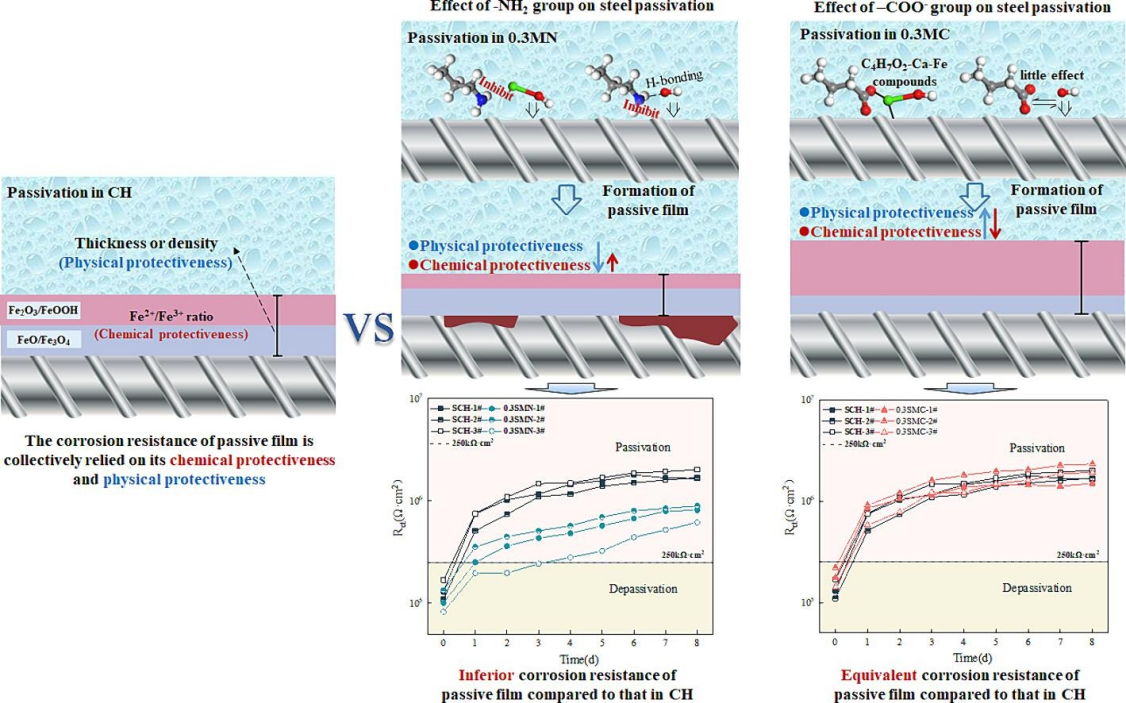Recently, The team of Professor Chen Zheng from SKL is entitled "Effects of –NH2 and –COO− functional groups on the steel passivation in concrete pore solution: Passivation performance and interfacial adsorption mechanism" was published in the Applied Surface Science.

The use of organic corrosion inhibitors is a common method for enhancing the corrosion resistance of steel in concrete. Whereas, the effects of common functional groups (–NH2 and –COO−) on the steel passivation are still unclear. Herein, propylamine (C3H7NH2) and calcium butyrate ((C3H7COO)2Ca) were selected as representative inhibitors containing –NH2 and –COO− groups, respectively. The passivation performance of steel affected by C3H7NH2 or (C3H7COO)2Ca in simulated concrete pore solution was explored by electrochemical method, XPS tests, and DFT simulation. Experimental results show that the (C3H7COO)2Ca has little effect on passivation performance, while the C3H7NH2 exhibits an inhibition effect. The XPS data shows that the (C3H7COO)2Ca decreases the Fe/Fen+ ratio on the steel surface, thereby enhancing the physical protectiveness of passive film. Although the C3H7NH2 causes an increase in the chemical protectiveness of passive film (Fe2+/Fe3+ ratio increase), it induces a more pronounced decrease in physical protectiveness, resulting in the poor passivation performance of steel. DFT results indicate that the C4H7O2− adsorption increases the activity of iron surface, thereby promoting the adsorption of passivation substances (OH–/CaOH+). Moreover, insoluble C4H7O2-Ca-Fe compounds form due to the electron transfer between –COO− and CaOH+. Besides, the C3H7NH2 inhibits the adsorption of OH–/CaOH+ on steel surface.